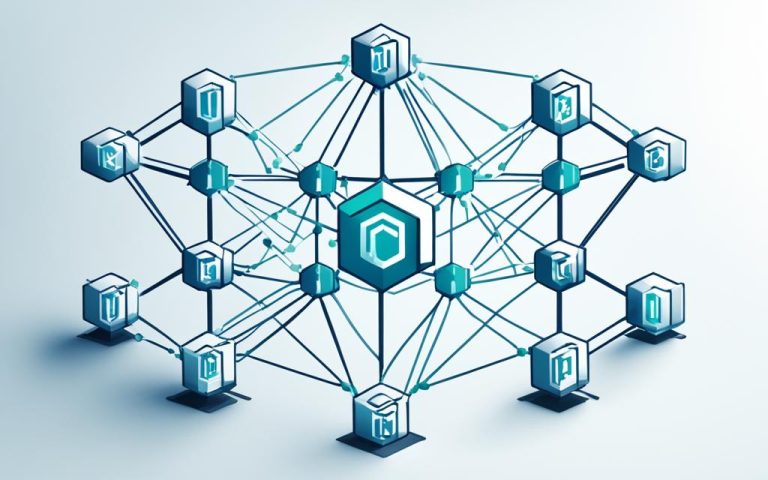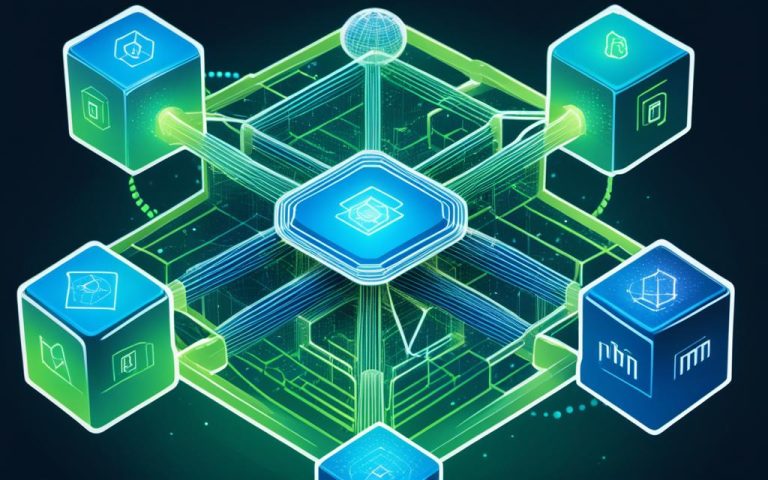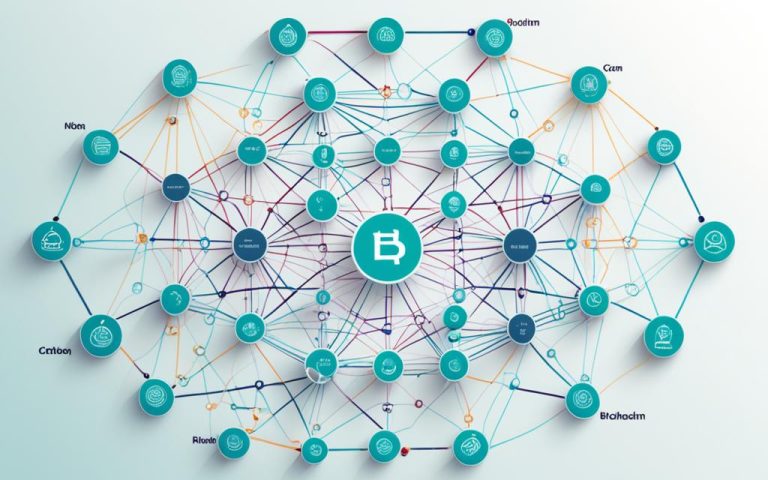Avalanche is a unique network made of different blockchains. It has three main parts: the Contract Chain (C-Chain), the Platform Chain (P-Chain), and the Exchange Chain (X-Chain). These parts work together to support different blockchain tasks smoothly.
The Contract Chain (C-Chain) lets people use digital contracts. It works well with Ethereum apps, making things faster and cheaper than on Ethereum. To find out more about the C-Chain, check out this Kaleido blog post.
The Platform Chain (P-Chain) is for running apps and handling digital assets with a focus on being secure and efficient. It manages the important validator operations in Avalanche. For more details on the P-Chain, look at this Coinmonks article.
The Exchange Chain (X-Chain) is made for decentralized trading, allowing fast and efficient exchanges. It lets people create and trade Avalanche’s own tokens. To understand the X-Chain better, you can go through this BabyPips guide.
Avalanche was built by the team at AVA Labs, including Emin Gün Sirer, Kevin Sekniqi, and Ted Yin. Big names like Andreesen Horowitz and Galaxy Digital have invested in it. The network stays safe with validators who lock up a certain amount of AVAX, Avalanche’s currency. This currency is used for fees, rewards, and enhancing the platform’s security.
In 2022, Avalanche created Subnets to make blockchain networks more adaptable. These Subnets allow for blockchains that match specific needs within Avalanche. The network’s design and consensus mechanism ensure it can handle transactions in under three seconds. This helps avoid too much traffic.
The Exchange Chain (X-Chain)
The X-Chain is part of the Avalanche network, made for asset trading and decentralized exchanges. It’s tailored for a smooth and fast digital asset trading experience.
It’s known for quick and safe transactions. This is great for trading where time and security matter a lot.
The X-Chain also features multi-signature wallets. These wallets need more than one signature for a transaction. This means better security for your digital assets.
Moreover, there’s a built-in programming language. It lets traders create their own strategies. This opens up opportunities for customized trading on the X-Chain.
In summary, the X-Chain excels in asset trading. It offers quick, secure transactions, multi-signature wallets, and custom trading options. These benefits make it a top choice for those looking to trade assets on the Avalanche network.
| Key Features of the X-Chain: |
|---|
| Fast and secure transactions |
| Support for multi-signature wallets |
| Built-in programming language for custom trading logic |
The Platform Chain (P-Chain)
The Platform Chain, or the P-Chain, is key to the Avalanche network. It’s a place where people build apps and manage assets. Thanks to its solid design and new features, the P-Chain is great for making and handling decentralized apps and assets.
The P-Chain stands out for managing loads of transactions fast. Avalanche can deal with up to 4,500 transactions every second. Plus, another part of Avalanche, the X-Chain, can handle over 10,000 transactions per second. It also confirms transactions in less than 3 seconds. These speeds are why the P-Chain is perfect for quick app development and effective asset handling.
Developers can use a special smart contract language on the P-Chain. This lets them create apps that really fit their needs. This smart contract language is both flexible and robust, ideal for complex app operations.
The P-Chain is also essential for the whole Avalanche network to work well together. It’s where staking rewards and transfers from the other chains are managed. This makes it the main place for staking and running the network’s validators.
For developers and users, the P-Chain is safe and efficient for building apps and handling assets. Its quick processing times, low waiting for transactions, and strong smart contract language make it a top choice. Using the P-Chain helps developers take full advantage of the Avalanche network, joining over 300 projects already there.
If you want to know more about Avalanche and its P-Chain, here are some good reads:
- An Overview of Avalanche (AVAX) – Part
- What’s the Difference between the Avalanche C-Chain, X-Chain, and P-Chain
- A Beginner’s Guide to AVAX and the Avalanche Network
These resources can help you understand more about the P-Chain. They’ll teach you about its uses, app development, and the wider Avalanche network.
The Contract Chain (C-Chain)
The Contract Chain (C-Chain) is key to the Avalanche network, focusing on smart contracts. It offers a safe and efficient way for developers to create and run digital contracts in the Avalanche system.
The C-Chain stands out because it works well with Ethereum. This means developers can use the Ethereum Virtual Machine (EVM) to easily move their smart contracts and apps to the C-Chain. This feature is great for Ethereum developers looking to join Avalanche for its fast and cheaper transactions.
Also, the C-Chain supports a unique smart contract language. This lets developers make and put out custom contracts specifically for the Avalanche network. It makes creating contracts easier and helps in building new solutions for businesses.
Thanks to its speedy contract execution and Ethereum compatibility, the C-Chain makes Avalanche a strong choice for decentralized apps. Developers can enjoy Avalanche’s benefits while keeping their apps secure and efficient.
FAQ
What is Avalanche’s Three Chain Structure?
Avalanche has three main blockchains: the Contract Chain (C-Chain), the Platform Chain (P-Chain), and the Exchange Chain (X-Chain). Each one has a unique role. Together, they make the Avalanche network work well.
What is the purpose of the X-Chain?
The X-Chain is all about asset trading and running decentralized exchanges. It’s great for quick and secure transactions. This makes it perfect for live trading.
It also supports multi-signature wallets, offering more security for digital assets. There’s even a special language for traders to customize their strategies.
How does the P-Chain contribute to application development on the Avalanche network?
The P-Chain is key for creating apps and managing assets on Avalanche. It’s both secure and efficient. This makes it a top choice for decentralized applications (DApps) and digital assets.
It has high speed and low waits for transactions. The P-Chain also has a smart contract language for making custom apps.
What is the purpose of the C-Chain on the Avalanche network?
The C-Chain is all about smart contracts on Avalanche. It offers a secure and efficient way to create and run digital contracts. It’s known for being fast and having low transaction delays.
Developers can use it with the Ethereum Virtual Machine (EVM) for Ethereum apps and contracts. It also has its own smart contract language for building custom contracts.



















